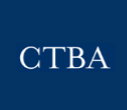Sound Fiscal Policy from the City of Chicago
Unlike most other core public policy areas, taxation is rarely the subject of either thoughtful public discourse or bipartisan cooperation. The reasons for this are not especially hard to understand:
First, no one really likes paying taxes, and for that reason tax policy is the subject of much political hyperbole.
Second, the media tends to play on all that taxpayer antipathy and political divisiveness when covering the issue, more out of an effort to drive sales than inform the public. Because of all that, it is really difficult for the person in the street to know when the public sector actually gets tax policy right.
A recent case in point involves the media coverage of the $76.5 million in property tax “increases” Mayor Lightfoot included in her FY 2022 budget proposal for the City of Chicago.[i] What the news got right: overall, if the Mayor’s budget passes, property tax revenue for the City will be $76.5 million higher in nominal dollars in FY 2022 than it was in FY 2021. However, not all of that is technically a tax increase.
For instance, $22.9 million of that year-to-year change is simply the automatic, annual adjustment for inflation that is made to the City’s property tax levy. Passed into law last year, this adjustment is based on the Consumer Price Index, or “CPI.”[ii] The CPI is a comprehensive inflation measure that broadly covers the change in price for all goods and services in the economy.
This automatic adjustment in the City of Chicago’s property tax levy is really good fiscal policy, because it maintains the value of that revenue source on a year-to-year basis, after accounting for inflation. Because of that, it does not actually constitute a tax “increase,” given that all this adjustment does is keep the property tax levy constant over time in real terms. And that is needed to ensure tax revenue maintains the same level of purchasing power from one fiscal year into the next. It also results in the public paying the same amount in taxes from one year into the next, in real, inflation-adjusted terms.
How it works is simple to explain. For ease of calculation, say that a tax system generated $100 in revenue in year one, and the CPI inflation rate for that year was three percent. In year two, this tax system would have to generate $103 in revenue to purchase the same level of services that $100 covered in year one, in “real” — i.e., inflation-adjusted — terms.
If, however, that tax system fails to generate revenue that at least grows with inflation from one year into the next, it will generate what is called a “structural deficit.” A structural deficit exists when the rate of growth in tax revenue is not sufficient to continue supporting the same level of public services from one fiscal year into the next. So, even when services are not added or increased, and even when the economy is expanding normally, poor tax policy results in the public sector realizing a deficit that grows over time, making it next to impossible for service levels to be maintained.
Which means that the automatic CPI-inflation adjustment built into Chicago’s property tax levy is sound tax policy that simply keeps tax revenue — and tax burden — constant in real terms over time.
Meanwhile, another $28.6 million of the City’s $76.5 million year-to-year increase in property tax revenue comes from making an assessment on “new development” property which is coming out of Tax Increment Financing districts or “TIFs.”[iii] If the city did not make this levy, it would lose the ability to assess against the property in question in perpetuity. Which over the long-term would artificially decrease the property tax base available to Chicago, thereby helping create a structural deficit that impairs the City’s ability to maintain services. So like the automatic inflation adjustment, this is also good tax policy.
The only true property tax increase, then, is the remaining $25 million portion of the year-to-year increase in property taxes that is targeted to paying for capital debt the City is incurring for infrastructure. This is a very small — as in 1.6 percent — increase in property taxes from 2020 levels. It also happens to represent sound tax policy, because the City is identifying a revenue source to cover its long-term infrastructure investment.
When analyzing the City’s use of debt, it is crucial to distinguish sound debt practices from irresponsible ones. For instance, much of the City’s historic use of “scoop and toss” financing was highly irresponsible because the debt was used to cover current spending on services. That’s like a family using credit card debt to pay for groceries and rent.
On the other hand, it is both good public policy and sound fiscal practice for the City to issue debt to pay for physical infrastructure needs which have high upfront costs but also a long and valuable useful life that generates economic, social, and quality of life benefits for decades. This practice is akin to a family taking out a mortgage to pay for a home. So, for a relatively small hike in property taxes, Chicagoans will get infrastructure benefits that will last for generations.
[i] City of Chicago, “2022 Budget Overview.” https://www.chicago.gov/content/dam/city/depts/obm/supp_info/2022Budget/2022OverviewFINAL.pdf. 63.
[ii] City of Chicago, “2022 Budget Overview.” https://www.chicago.gov/content/dam/city/depts/obm/supp_info/2022Budget/2022OverviewFINAL.pdf. 63.
[iii] City of Chicago, “2022 Budget Overview.” https://www.chicago.gov/content/dam/city/depts/obm/supp_info/2022Budget/2022OverviewFINAL.pdf. 63.
